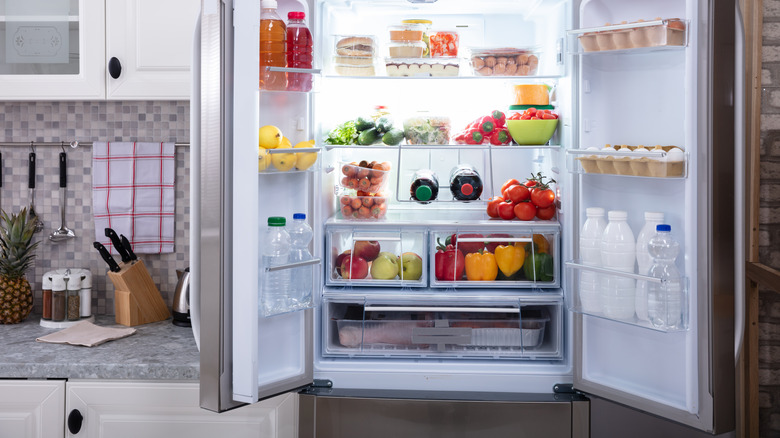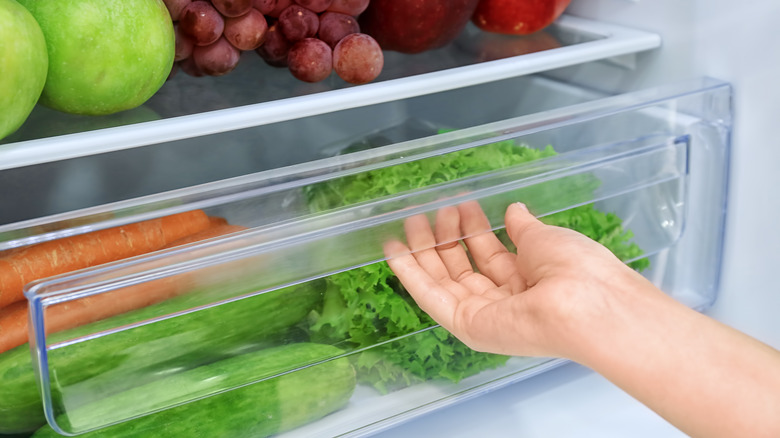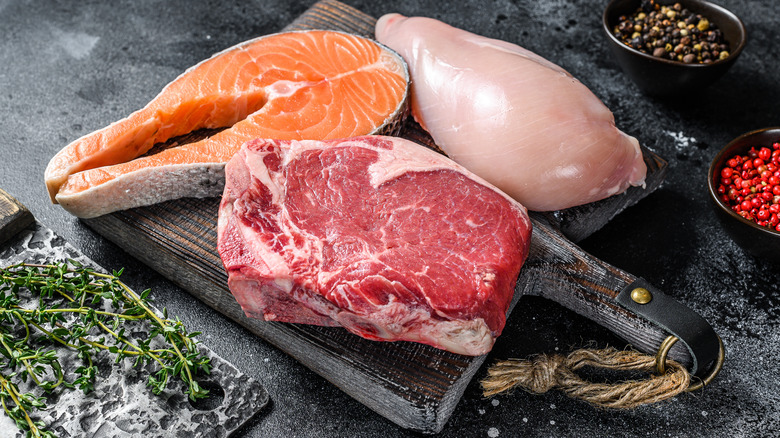Crisper Drawer Vs. Fresh Drawer: What's The Difference?
While there's no doubt that refrigerators are indispensable fixtures in modern homes, the first electrified models back in the early 1900s weren't much more than an icebox with a refrigeration unit attached to the top, as noted by Whirlpool. Over a century, that simple fridge has morphed into something we can't live without, and we're reminded of that very quickly as soon as the power goes out. From chilling drinks to preserving food, this workhorse appliance takes care of our cooling needs daily, and there's the right refrigerator for every kitchen.
From more modest units to innovative models with touch screens, the refrigerator has changed over the years, and so have its features. Adjustable shelving, built-in water dispensers, and other modern conveniences now reside in them, along with tried-and-true drawers for storing foods. However, sliding plastic crisper drawers can be some of the most bewildering elements within a fridge. Some models also have fresh drawers that can add to the confusion. With food prices rising, it's more important than ever to take full advantage of those drawers to stow food properly and keep waste to a minimum.
The crisper drawer's purpose
Crisper drawers are designed primarily for produce. As the name implies, they can help keep fruits and vegetables crisp, fresh, and healthy for extended periods. Many have humidity controls that allow you to change the range from low to high, although some are marked with specifics. Low-humidity foods include avocados, pears, and melons (those with pits or seeds) that will deteriorate more readily if the gasses they emit are not allowed to escape. That's why putting them in a closed drawer with no ventilation isn't a good idea. Produce requiring high humidity for longer freshness is the type that usually wilts easier, like broccoli, cucumbers, lettuce, and other leafy green vegetables, via Whirlpool. They need that extra moisture from high humidity to keep them crisp.
Utilizing a crisper drawer to store cheese is also possible since it constantly requires a cool environment. If you only have two crisper drawers, you can try using one drawer for cheeses and another for high-humidity produce. This works well since you can store low-humidity items such as apples on another shelf in the fridge for a reasonable time without a problem.
How to utilize a fresh drawer
Not all refrigerators have fresh drawers; when they do, it's important to use them for the right foods. Usually, they are the bottom-most drawer of the fridge in the coldest part of the unit, and most are thinner and broader than crisper drawers. Since fresh drawers are so cold, they're meant to hold meats and fish when you bring them home from the market until you cook them. They're sometimes purposely called meat drawers, via Today. They're designed to keep meat and seafood fresh for a couple of days at the max rather than for long-term storage like a freezer. You can store cold cuts in them as well. Compared to crisper drawers, the environment is too dry for many types of produce and colder than it needs to be to keep veggies and fruits fresh.
Many newer refrigerators also have larger multi-purpose drawers that can be used for chilling beverages, pre-packaged snack foods like pudding and gelatin desserts, or as fresh drawers for meats and seafood since they have variable settings. However, they're not suitable for produce since they only have settings to help you choose the correct temperature rather than humidity controls. Following these simple guidelines for stowing food in your fridge drawers should help keep your food fresh longer and minimize waste.


